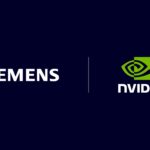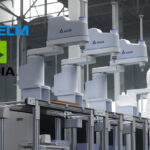ASIA ELECTRONICS INDUSTRYYOUR WINDOW TO SMART MANUFACTURING
NVIDIA's Breakthrough CuLitho Gains TSMC, Synopsys Nod
NVIDIA Corporation has confirmed TSMC and Synopsys are going into production with NVIDIA’s computational lithography platform. Particularly, they will accelerate manufacturing of the next generation of advanced semiconductor chips.
TSMC and Synopsys have integrated NVIDIA cuLitho with their software, manufacturing processes, and systems to speed chip fabrication. Moreover, to support the latest-generation NVIDIA Blackwell architecture GPUs in the future.
“Computational lithography is a cornerstone of chip manufacturing,” said Jensen Huang, founder and CEO of NVIDIA. “Our work on cuLitho, in partnership with TSMC and Synopsys, applies accelerated computing and generative AI to open new frontiers for semiconductor scaling.”
NVIDIA also introduced new generative AI algorithms that enhance cuLitho, a library for GPU-accelerated computational lithography. Thus, dramatically improving the semiconductor manufacturing process over current CPU-based methods.

Semiconductor Leaders Advance cuLitho Platform
Computational lithography is the most compute-intensive workload in the semiconductor manufacturing process. That is, consuming tens of billions of hours per year on CPUs. A typical mask set for a chip — a key step in its production — could take 30 million or more hours of CPU compute time. This necessitates large data centers within semiconductor foundries. With accelerated computing, 350 NVIDIA H100 systems can now replace 40,000 CPU systems, accelerating production time, while reducing costs, space, and power.
“Our work with NVIDIA to integrate GPU-accelerated computing in the TSMC workflow has resulted in great leaps in performance, dramatic throughput improvement, shortened cycle time, and reduced power requirements,” said Dr. C.C. Wei, CEO of TSMC. In addition, Wei said, “We are moving NVIDIA cuLitho into production at TSMC. Leveraging this computational lithography technology to drive a critical component of semiconductor scaling.”
Since its introduction last year, cuLitho has enabled TSMC to open new opportunities for innovative patterning technologies. Particularly, in testing cuLitho on shared workflows, the companies jointly realized a 45x speedup of curvilinear flows. Moreover, it also realized a nearly 60x improvement on more traditional Manhattan-style flows. These two types of flows differ — with curvilinear the mask shapes are represented by curves, while Manhattan mask shapes are constrained to be either horizontal or vertical.
Critical in Enabling Angstrom-Level Scaling
“For more than two decades Synopsys Proteus mask synthesis software products have been the production-proven choice for accelerating computational lithography — the most demanding workload in semiconductor manufacturing,” said Sassine Ghazi, president and CEO of Synopsys. “With the move to advanced nodes, computational lithography has dramatically increased in complexity and compute cost.”
For that reason, Ghazi said the collaboration with TSMC and NVIDIA is critical to enabling angstrom-level scaling. This as the companies pioneer advanced technologies to reduce turnaround time by orders of magnitude through the power of accelerated computing.”
Synopsys is the pioneer in delivering advanced techniques for accelerating the performance of computational lithography. Synopsys’ Proteus™ optical proximity correction software running on the NVIDIA cuLitho software library significantly speeds computational workloads compared to current CPU-based methods. With Proteus mask synthesis products, manufacturers like TSMC can achieve exceptional precision, efficiency, and speed in proximity correction. Furthermore, it can also realize model building for correction and analyzing proximity effects on corrected and uncorrected IC layout patterns. Thus, revolutionizing the chip fabrication process.
Breakthrough Generative AI Support for Computational Lithography
NVIDIA has developed algorithms to apply generative AI to further enhance the value of the cuLitho platform. The new generative AI workflow delivers an additional 2x speedup on top of the accelerated processes enabled through cuLitho. The application of generative AI enables creation of a near-perfect inverse mask or inverse solution to account for diffraction of light. The final mask is then derived by traditional and physically rigorous methods, speeding up the overall optical proximity correction (OPC) process by a factor of two.
Many changes in the fab process currently necessitate a revision in OPC. Thus, driving up the amount of compute required and creating bottlenecks in the fab development cycle. These costs and bottlenecks are alleviated with the accelerated computing cuLitho provides and generative AI.
For that reason, fabs need to allocate available compute capacity and engineering bandwidth to design more novel solutions in development of new technologies for 2nm and beyond.
–19 March 2024-




